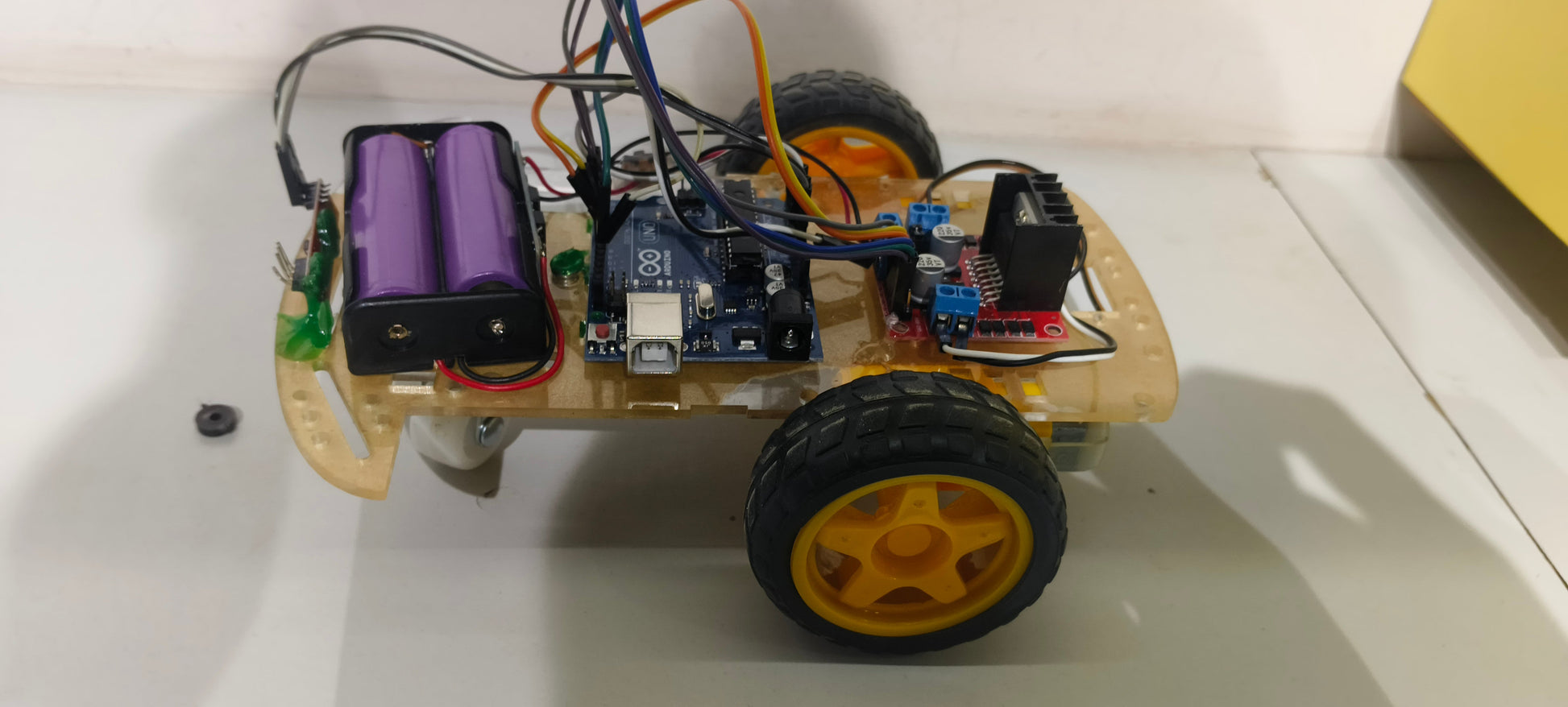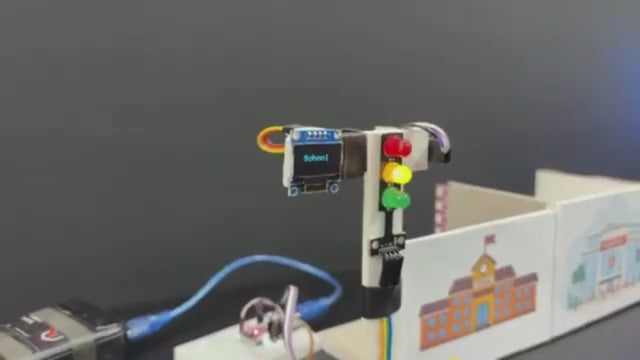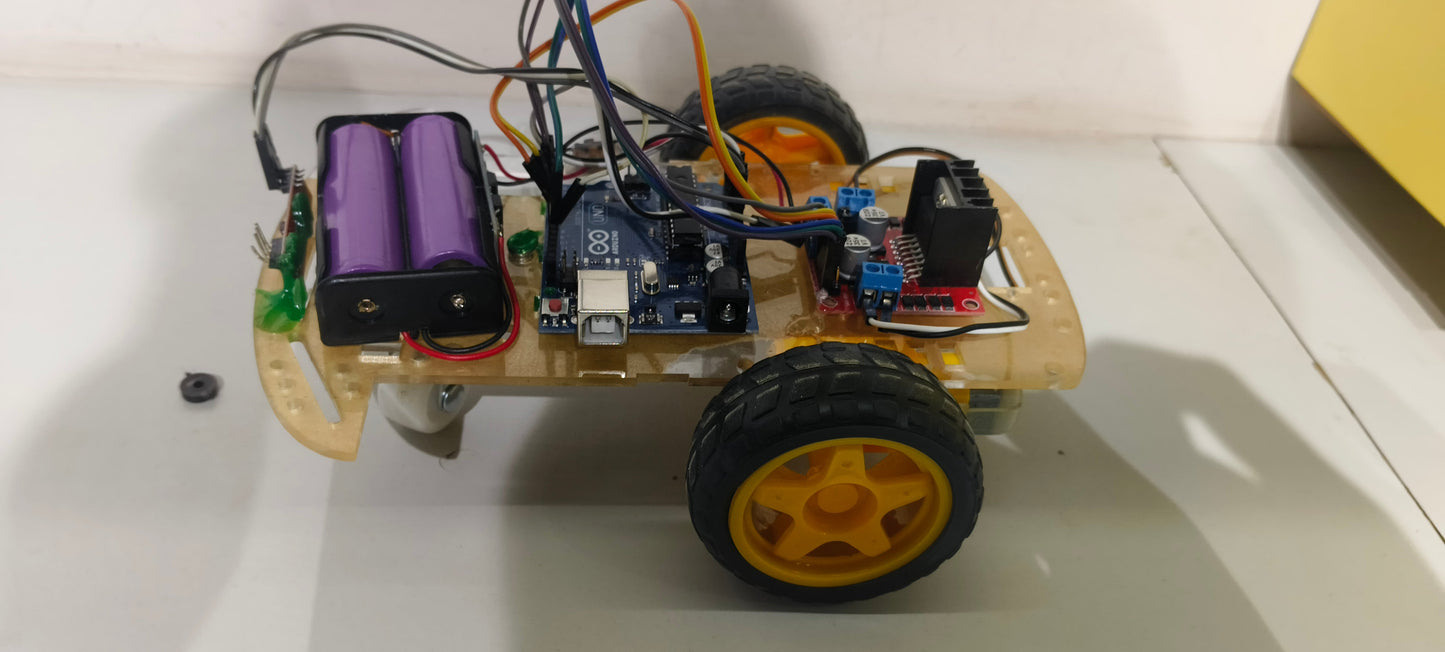Many accidents happen because vehicles move at high speeds in sensitive zones (school zones, hospitals, sharp turns). This project aims to automatically reduce vehicle speed when it enters a restricted zone, preventing accidents.
🔹 Working Principle
-
Transmitter at Roadside
-
In school zones, accident-prone areas, or traffic checkpoints → an RF transmitter (433 MHz / IR / RFID / LoRa beacon) is installed.
-
-
Receiver in Vehicle
-
Every vehicle has a small RF/IR receiver connected to an Arduino / microcontroller + motor driver (L298N/ESC).
-
-
Normal Condition
-
Vehicle runs at full speed (as per code).
-
-
When in Restricted Zone
-
Receiver picks up the signal → Arduino reduces motor PWM (speed) to a safe level (e.g., 30–40%).
-
-
After Leaving Zone
-
Signal lost → speed automatically returns to normal.
-
🔹 Components Required
-
Arduino Uno / Nano – controller inside vehicle
-
RF Transmitter (433 MHz / LoRa / IR LED) – roadside unit
-
RF Receiver – mounted on vehicle
-
DC Motor + Motor Driver (L298N / L293D) – simulating vehicle engine
-
Power Supply (Battery) – 9V / Li-ion pack
-
LEDs / LCD – to display speed status (optional)
-
Small Car Chassis with Motors – for prototype demo
🔹 Cost Estimate (Prototype)
| Component | Cost (INR) |
|---|---|
| Arduino Uno/Nano | ₹600 – ₹900 |
| RF Tx/Rx Module | ₹150 – ₹250 |
| L298N Motor Driver | ₹150 – ₹200 |
| Car Chassis + Motors | ₹400 – ₹600 |
| Battery Pack | ₹150 – ₹250 |
| Misc. (Wires, Breadboard, LEDs) | ₹200 |
💰 Total: ~ ₹1,600 – ₹2,200
🔹 Real-Life Applications
✅ Prevents speeding in school zones, hospitals, residential areas
✅ Reduces accidents in hilly or accident-prone roads
✅ Can be integrated into smart city traffic systems
✅ Future extension → IoT/GPS for automatic vehicle-to-road communication
⚡ In short:
-
It’s like a “speed governor” but automatic & zone-specific.
-
Small prototype = RF transmitter + Arduino car.
-
Real-world = GPS + vehicle ECU integration.













